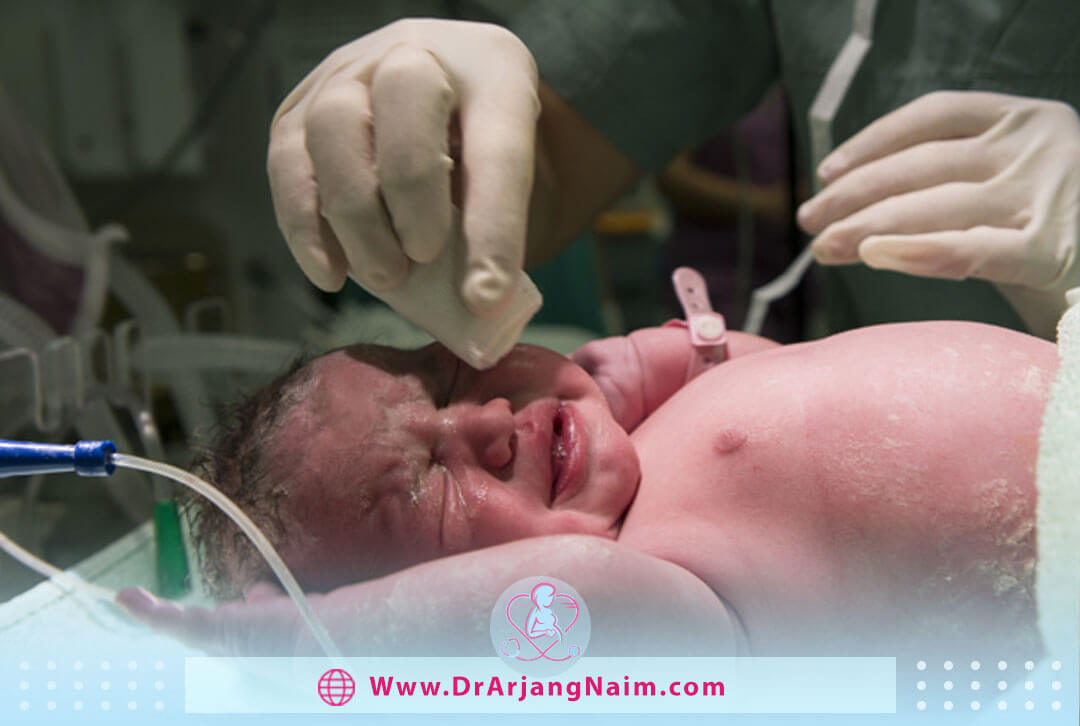Lotus birth is birthing the placenta and baby and leaving the two attached until the cord falls off on its own. This can take 3 to 10 days, though there’s no research to prove it. Tying the umbilical cord to cut off blood circulation a few minutes after the baby is born is normal. Finally, cutting the umbilical cord separates the baby from the placenta.
What does the placenta do?
Pregnancy involves a series of complex events, one of which is the formation of a placenta. Generally, the placenta begins to form when a fertilized egg is implanted in the uterus wall. During ovulation, the egg leaves the ovary to move through the fallopian tube and hopes to be fertilized. If successful, the ovulated egg meets the sperm to begin embryo formation. This ovulated egg is called a zygote. Within a few days, the zygote will complete many cell divisions in the fallopian tube.
When the zygote reaches the uterus, these cell divisions continue, and then the zygote becomes a blastocyst. At this stage, some cells begin to form placentas, and others begin to form embryos.
During pregnancy, the placenta transforms from a few cells into an organ weighing about 1 pound. The placenta is formed and ready to feed the baby by the twelfth week. However, it continues to grow during pregnancy. The placenta matures at 34 weeks. Under normal circumstances, the placenta attaches to the wall of the uterus.
The placenta is an organ that develops in the uterus during pregnancy. It provides oxygen and nutrients to the growing baby and removes waste products from the baby’s blood. The placenta attaches to the wall of the uterus, and the umbilical cord is formed from it. The limb is usually attached to the uterus’s top, side, and front or back.
It keeps the mother’s placenta separated from the fetus’ blood, helping keep some bacteria and viruses out of the womb and protect the fetus from infections. In addition to being a lifeline for the baby, the placenta also produces and secretes hormones directly into the bloodstream to help with pregnancy and fetal development. These hormones include:
- Progesterone
- Estrogen
- Oxytocin
- Human chorionic gonadotropin
- Human placental lactogen
What are the recommendations for cord removal?
According to the American College of Nursing and Midwifery, the right time for cord clamping has been debated for over 50 years. It was previously believed that premature cord clamping closure within one minute of birth was more beneficial for the baby and mother. However, a lot of high-quality research has proven otherwise.
The American College of Obstetricians and Gynecologists recommends waiting at least 30 to 60 seconds before clamping the cord. The World Health Organization recommends waiting one to three minutes before clamping the cord.
The only thing that delayed cord clamping is not recommended is that the baby is born with some distress and needs immediate medical attention.
Lotus birth vs. delayed cord clamping
Delaying cord clamping is now a universally recommended method. It is a standard procedure in hospitals and home births to first take the umbilical cord to stop the blood flow and then cut the umbilical cord to separate the baby from the placenta. For both infants and premature infants, delayed cord clamping has been shown to:
- Increase hemoglobin levels
- Improve red blood cell volume
- Improve circulation
- Improve iron stores over the first few months of life
- Decrease the need for blood transfusion
- Decrease risk of necrotizing enterocolitis and intraventricular hemorrhage
Delaying umbilical cord closure increases the risk of jaundice slightly, but the benefits outweigh the risks. While there is much research to promote delayed umbilical cord ligation, research on lotus birth benefits is limited to small case studies.
Proponents of the lotus birth belief that it may reduce infection risk because it does not damage the umbilical cord. However, it can also increase the risk of infection because, after birth, the placenta is a dead organ that contains stagnant blood. The lotus’ birth can also be a spiritual act to honor the relationship between the baby and its embryonic period.
Benefits of lotus birth
Lotus birth benefits include:
- Smooth and less aggressive transfer of the baby from the uterus to the world
- Decreased injury to the belly button
- Increased blood and nourishment from the placenta
- A spiritual ceremony to celebrate the life of the baby and the placenta
- Prioritize the more natural and non-interventional approach
There is no research to support the first three claims. The placenta receives its source of blood from the mother and is no longer alive or circulating after the placenta’s birth. Therefore, it is unlikely that keeping the baby and the pair stable will have benefits.
If a woman has an emergency at birth and is waiting for medical attention, a lotus birth may be helpful or necessary. For example, if a woman gives birth during a storm when the streets are flooded, and she cannot get to the hospital immediately, keeping the baby’s placenta may reduce the risk of complications while waiting for help. This is because cutting the umbilical cord can cause bleeding and infection.
Risks of lotus birth
There are several known dangers associated with the birth of a lotus. The Royal College of Obstetricians and Gynecologists (RCOG) in the UK warns people who choose to give birth to a lotus to be vigilant because of the risk of infection.
The placenta contains blood, and when the baby is born, the blood circulation stops, and the placenta becomes a dead organ prone to infection, which may then spread to the baby. It should be noted that bacteria can multiply in dead and decomposing tissues.
There is a lack of scientific studies on the lotus’ birth because it is not a widespread or accepted practice in the United States. The medical community often discourages it because of the risks, so there is no empirical study.
Considerations

Because Lotus Birth causes the baby and placenta to connect through the umbilical cord, the postpartum experience and baby care will be slightly different from a normal delivery. Here are some considerations to keep in mind for a lotus birth:
- The mother can still hold her baby immediately after the baby is born.
- The placenta is usually birthed within 5 to 30 minutes after birth.
- Need a sterile place to catch and carry the placenta.
- The placenta slowly dries and rots, and eventually, the umbilical cord comes out of the baby’s abdomen.
- With stagnant blood sitting, the placenta is likely to smell.
- Mating the placenta does not mean replacing the baby with food. Because the placenta is no longer attached to the mother, it does not give the baby nutrients. Newborns are fed for at least two to three hours.
- Baby clothing will need to have an opening in the middle.
- Most healthcare providers will not perform lotus births due to a lack of research. Major maternal and fetal health organizations do not even comment on the lotus’ delivery because it is rare and not well understood.
- A baby’s immune system is very sensitive, and a dead limb can quickly develop septicemia. This is why proper disinfection is needed several times daily to ensure the placenta’s health.
What steps should you take to choose Lotus Birth?

Lotus Birth steps included:
- When the baby is born, leave the umbilical cord intact. If the rope is around the child’s neck, lift it from above.
- The placenta should give birth naturally.
- Place the placenta in a recipient bowl next to the mother.
- Wait for the baby to have a full umbilical cord blood transfer before touching the placenta.
- Rinse the placenta gently with warm water and pat dry.
- Wrap the placenta in absorbent material such as diapers or cloth and place it inside the placenta bag. The daily or more coverage is changed in the event of a leak.
- Bathe the baby, as usual, hold the placenta with it and minimize movement.
The bottom line
The lotus birth procedure does not cut the umbilical cord after birth and instead allows the placenta to remain attached until it is naturally destroyed. It is believed to be a soothing ritual that calms the child. However, there is very little research to prove the benefits, and the chances of infection and harm to the baby are very high. Before choosing a lotus delivery, ask your doctor or midwife for advice and experience. If you decide to give birth with a lotus, work with a doctor who has experienced this delivery method.
Do your research from neutral sources and get opinions from different experts. In the end, the choice is yours, but having the right information about the lotus’s birth can help you make informed decisions.
Additional questions
- Is a zygote a fertilized egg?
The fertilized egg (zygote) divides repeatedly as it travels down the fallopian tube to the uterus. First, the zygote becomes a solid ball of cells. It then turns into a hollow ball of cells called a blastocyst.
2. What does human placental lactogen do?
Human placental lactogen helps regulate metabolism (using fats and carbohydrates for energy).
3. What causes necrotising enterocolitis?
NEC involves infection and inflammation in the baby’s gut, which may be caused by the growth of dangerous bacteria or bacteria in parts of the gut where they don’t normally live.
4. How big is a placenta?
In humans, the placenta is, on average, 22 cm long and 2-2.5 cm thick. It usually weighs approximately 500 grams (a little over 1 pound).
5. What causes placenta problems?
Certain placental problems are more common in women who smoke or use cocaine during pregnancy. Abdominal trauma (trauma to the abdomen—such as a fall, accident, or other type of trauma) increases the risk of placental abruption.
References
https://www.healthline.com/health/pregnancy/lotus-birth#takeaway
https://www.whattoexpect.com/news/pregnancy/are-lotus-births-safe/
https://www.verywellfamily.com/lotus-birth-4177642
https://www.pregnancy.com.au/birth/lotus-birth/
https://www.healthline.com/health/pregnancy/when-does-the-placenta-form#when-it-takes-over




